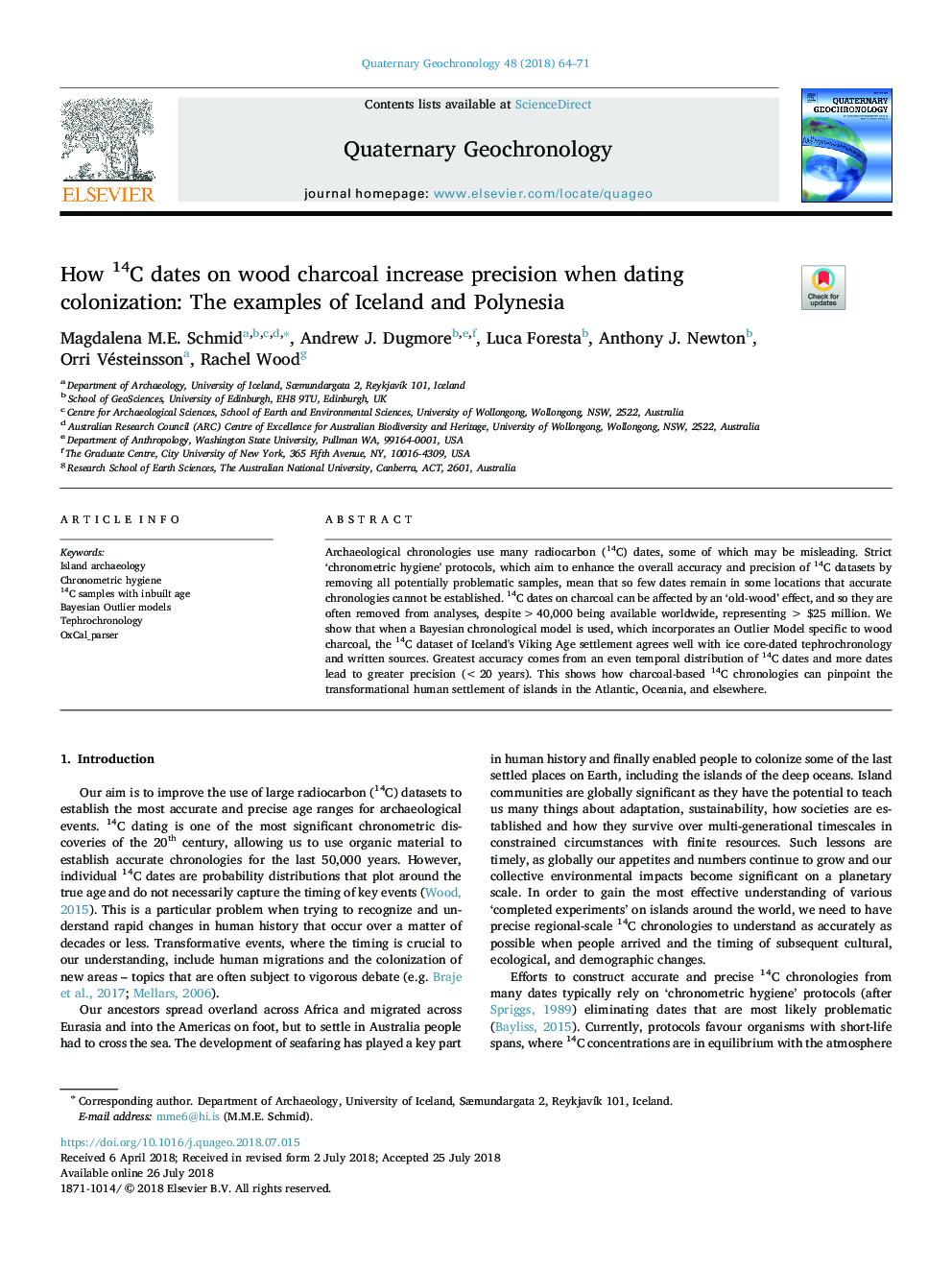| Article ID | Journal | Published Year | Pages | File Type |
|---|---|---|---|---|
| 8912793 | Quaternary Geochronology | 2018 | 8 Pages |
Abstract
Archaeological chronologies use many radiocarbon (14C) dates, some of which may be misleading. Strict 'chronometric hygiene' protocols, which aim to enhance the overall accuracy and precision of 14C datasets by removing all potentially problematic samples, mean that so few dates remain in some locations that accurate chronologies cannot be established. 14C dates on charcoal can be affected by an 'old-wood' effect, and so they are often removed from analyses, despite >40,000 being available worldwide, representingâ¯>â¯$25 million. We show that when a Bayesian chronological model is used, which incorporates an Outlier Model specific to wood charcoal, the 14C dataset of Iceland's Viking Age settlement agrees well with ice core-dated tephrochronology and written sources. Greatest accuracy comes from an even temporal distribution of 14C dates and more dates lead to greater precision (<20 years). This shows how charcoal-based 14C chronologies can pinpoint the transformational human settlement of islands in the Atlantic, Oceania, and elsewhere.
Keywords
Related Topics
Physical Sciences and Engineering
Earth and Planetary Sciences
Geochemistry and Petrology
Authors
Magdalena M.E. Schmid, Andrew J. Dugmore, Luca Foresta, Anthony J. Newton, Orri Vésteinsson, Rachel Wood,
